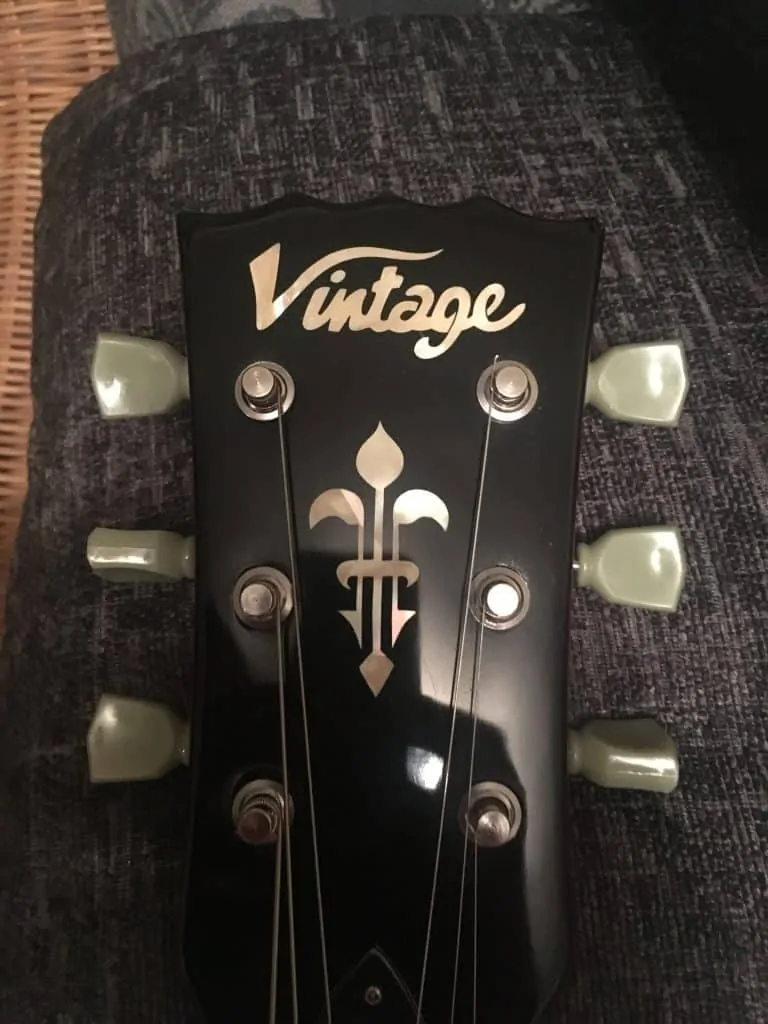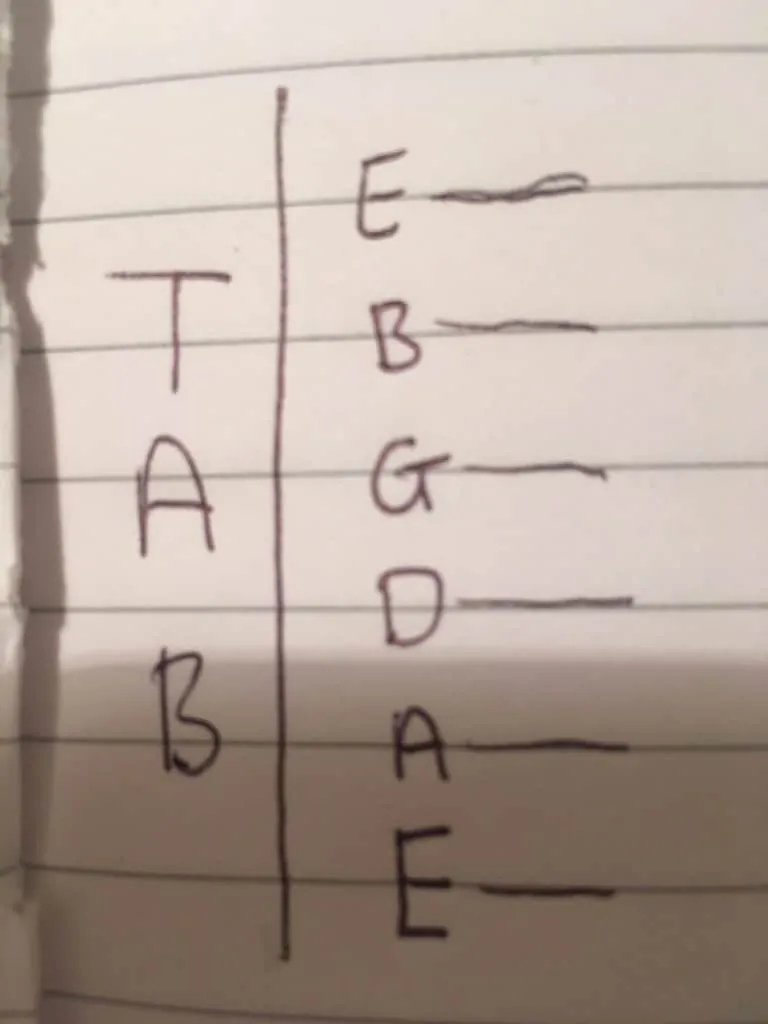Tuning your guitar is pretty much the first thing you’ll do when you’re about to play. If you’re not in tune with yourself, then moving between strings is not going to sound great. If you’re not in tune with your band, you’ll sound even worse!
In this important guide you will learn:
Contents
What Is Tuning?
Tuning is basically the way to make your guitar sound good. If it’s out of tune (unless you’re going for something really experimental) it won’t sound great.
If you’re looking to get a bit sciency, it’s all to do with notes and frequencies. If you tune up, you’re tightening your string, which makes for faster, thinner vibrations and therefore a higher frequency and higher note. If you’re tuning down, you’re loosening your string and it will vibrate slower and with larger fluctuations, therefore creating a lower frequency and lower note.
In western tuning systems, we use a system called equal temperament. This means that the relationship across intervals is the same, no matter which key we play in. Specifically, our system is 12-tone (C, C#, D, Eb, E, F, F#, G, Ab, A, Bb, B) and is based around dividing an octave into 12 equal groups, but many other types of temperament exist (including 22 and 53). Eastern music often uses very different tuning systems to these, though Western systems are still prominent globally.
Making your guitar in tune with itself means to create equal temperament between each string so they sound ‘correct’ when played together or following each other. Making it in tune with a band means to make sure your E (or any other note) is exactly the same pitch as the same E (or any other note) of the other instruments in the band.
How To Tune Your Guitar
Typically, your guitar will have 6 tuning pegs at the top of its neck (though we’ll get into a variants in a minute if you have a neckless guitar or more than 6 strings- stay tuned!). These are connected to the strings, and control how tight they are and therefore their pitch.
Actually tuning your guitar is actually pretty simple. There are two ways you can approach it. Simpler, is to play each string and let it ring, and then twist the tuning peg around until you hear your desired note. Repeat for each string. Slightly more complex but a bit more accurate when tuning by ear, is to play an artificial harmonic on the 12th fret of each string, then let it ring out as you turn the tuning pegs.
The few variations I mentioned include guitars with 7+ strings (or even basses etc.) which you’ll approach in the same way, but the head of the guitar will simply have more tuning pegs. Headless guitars are a slightly different matter, as they’ll have no tuning pegs, and will instead have twistable knobs at the bottom of the guitar’s body. Once you’ve located these, the process is pretty similar- simply twist them while playing each string, until it reaches the note you’re going for.
‘Standard’ Tuning
For Westerners, standard guitar tuning is (low to high) E-A-D-G-B-E. This technically creates a Em11 chord. You’ll basically want to tune your sixth string to a low E, then go up in 4ths until your fifth string, where the G-B leap is a major 3rd. The first string is an E two octaves above string six.
Everything we’ll teach you here will be based around standard tuning, including all of the chord shapes this guide provides. However, there are a lot of different tunings we could use.
Alternate Tunings
Alternate tunings are any organisation of string pitches that doesn’t follow the E-A-D-G-B-E structure. Whether to create a different sound (such as darkness in extreme metal) or make it easier to play certain pieces, alternate tunings are helpful in a lot of ways.
Common:
- Regular Tunings: This type of tuning is built on stacking equal musical intervals. ‘Standard’ tuning almost uses this, but the G-B interval is a major 3rd rather than a perfect 4th. Examples of perfect 4th tuning can be found in Stanley Jordan’s music, including his version of ‘Eleanor Rigby’, while all 5ths (or Mandoguitar) tuning has been adapted by King Crimson’s Robert Fripp to create New Standard Tuning, which adds a minor 3rd leap in the top two strings.
- Shifted Tunings: Shifted tunings are quite a simple concept- basically just transposing the notes of standard tuning up or down. This can help to play in a different key without having to change how you play. It can act a bit like a capo when the notes become higher.
- Drop Tunings: Drop tunings lower the sixth string in a standardly tuned guitar by one full step. Drop D is very common, used in a huge amount of metal music and one famous example can be found in Led Zeppelin’s ‘Moby Dick’. Alice In Chain’s ‘Them Bones’ uses Drop C# (which means the other strings are tuned standardly and then dropped by a semitone). This system could go as low as you want, but Drop A is most likely to be the lowest you’d go.
- Open Tunings: This tuning system creates a chord when played open. Technically, any tuning is an open chord in some way, but these tunings tend towards creating a major or minor chord. The White Stripes’ ‘Seven Nation Army’ uses Open A (E-A-E-A-C#-E) tuning, while Devin Townshend uses Open C tuning on most of his solo work.
Uncommon:
- DADGAD: This one does what it says on the tin, tuning each string from low to high as written. Led Zeppelin’s ‘Kashmir’ is famed for its use of the tuning, but it is often found in Celtic music.
- DADDAD: This one is almost identical to that above, but with the 4th string G tuned to a D instead, making it the same pitch as the string before it. This tuning is also often used in Celtic music, but Bill McLaughlin also often uses the system.
- Ostrich Tuning: This rare tuning puts every string to the same pitch, spread across octaves in order to create a chorused sound. Soundgarden’s ‘Mind Riot’ uses this (E-E-E-E-E-E).
- Specific Tunings: The band Karnivool often use a B-F#-B-G-B-E tuning, Goo Goo Dolls’ ‘Iris’ uses a B-D-D-D-D-D tuning, and Grizzly Bear’s ‘Sleeping Ute’ creates an F#m7/E chord when strummed open in its E-A-C#-F#-A-C# tuning.
- Microtonal Tuning: You’ll rarely come across microtones when playing guitar, as a standard guitar is built around equally spaced frets in 12 tone equal temperament. However, the open strings can be tuned to microtonal intervals if you’re looking to include quarter tones in your playing. Fretless guitars or microtonal fretboards would be a better option for microtonal playing, though.
A Few Ideas
When tuning your guitar, you can take a lot of approaches. Playing a note on a (tuned) piano and then replicating it on the guitar is a simple way. Starting with an E on the lowest string, then playing the 5th fret of that string at the same time as the A string until they sound the same would also work. However, getting a tuner would be your most reliable point of call.
- App tuners are easy to get hold of, mostly free and are simple to use. However, they won’t be as detailed and precise as many others.
- Clip on tuners will be a lot more precise and can be placed on your guitar, however, they may be influenced negatively by background noise.
- Pedal tuners are the most accurate way of tuning as the strings pitch will be fed straight into it, avoiding background noise. However, they’ll typically be the most expensive option.
The best thing to do when making your decision, is to take a look at our helpful guide to the best guitar tuners.
To Conclude
- Tuning is important: make sure your guitar is in tune with itself and with your band.
- Normally you’ll use standard tuning, but many alternate tunings can create a new tone, or make certain things easier to play.
- Twisting your tuning pegs will tighten or loosen your strings, and using a tuner will help to tell you when you’ve reached the desired pitch.
Take a look at this video of Jon Gomm’s ‘Passionflower’ to show some really complex tunings in action. Not only is his guitar in a bizarre tuning (Eb-G-Bb-F-G-Bb), but he has replaced his tuning pegs with more sensitive banjo tuning pegs, so he can tune while playing!


